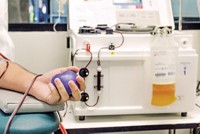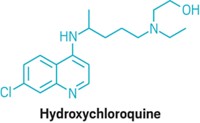Advertisement
Grab your lab coat. Let's get started
Welcome!
Welcome!
Create an account below to get 6 C&EN articles per month, receive newsletters and more - all free.
It seems this is your first time logging in online. Please enter the following information to continue.
As an ACS member you automatically get access to this site. All we need is few more details to create your reading experience.
Not you? Sign in with a different account.
Not you? Sign in with a different account.
ERROR 1
ERROR 1
ERROR 2
ERROR 2
ERROR 2
ERROR 2
ERROR 2
Password and Confirm password must match.
If you have an ACS member number, please enter it here so we can link this account to your membership. (optional)
ERROR 2
ACS values your privacy. By submitting your information, you are gaining access to C&EN and subscribing to our weekly newsletter. We use the information you provide to make your reading experience better, and we will never sell your data to third party members.
Biological Chemistry
Young blood may not cure aging ills after all
New method for mouse blood exchange could clear up conflicts in past experiments
by Elizabeth K. Wilson
November 23, 2016
| A version of this story appeared in
Volume 94, Issue 47

A new blood transfusion method may help resolve confusion over past experiments on the effects of giving young mouse blood to old mice and vice versa. In those experiments, the rodents’ circulatory systems were connected surgically.
A team at the University of California, Berkeley, including bioengineer Irina M. Conboy and her husband, researcher Michael J. Conboy, used computer-controlled microfluidic pumps to exchange blood between young and old mice, so that each received 50% of the other’s blood (Nat. Comm. 2016, DOI: 10.1038/ncomms13363). After the transfusion, the mice were disconnected.
Past studies that surgically connected old-young mice pairs have produced sometimes controversial evidence that seemed to point to young blood’s power to reverse age-related ills such as impaired cognition and cardiac function.
The new work is “very interesting” and “raises significant questions about the original experiments,” says Michael Rudnicki, director of the regenerative medicine program at the University of Ottawa.
The Conboy team points out that those past studies that surgically connect mice involved the sharing of more than blood: The old mice benefited from having access to the young animals’ organs to help carry out processes like blood oxygenation and filtration.
Irina Conboy says this complication has led to results that could be misinterpreted. “The research is valid, but it is not just about results, it’s how you draw conclusions,” she tells C&EN. Blood transfusions, she says, eliminate these confounding variables.
The team found that effects of young and old blood transfusions on the mice were complex. Old mice were better able to recover from muscle tissue injury when given young blood. But the young blood did not improve neuron regeneration in the old mice; and more important, neuron and liver cell regeneration was inhibited in young mice that received blood from elderly animals. This implies that old blood contains substances that cause health decline, the team says.
Identifying the substances and figuring out ways to remove them from old blood may be a more successful approach to thwarting the aging process than a dose of young blood, the researchers say.





Join the conversation
Contact the reporter
Submit a Letter to the Editor for publication
Engage with us on Twitter